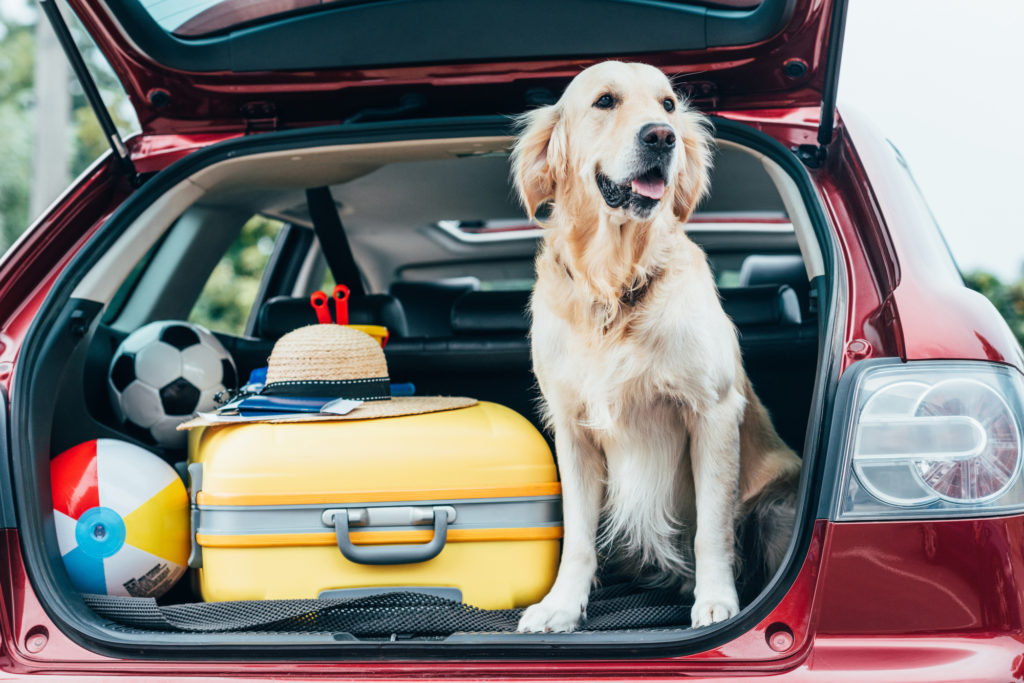
Remember that saying “when pigs fly?” We’d typically use it to describe a situation or idea that seems utterly ridiculous.
Well, what if I told you not only can pigs fly, but cows, elephants, and even whales have flown a time or two?
Sounds a wee bit ridiculous, right?
I’m not saying these animals suddenly sprouted wings and can fly with the birds, but just like your pet cat or dog, large exotic animals are occasionally moved to different habitats, homes, or zoos.
Whether you own a small dog or an elephant, here are a few interesting facts on how our furry friends travel the world.
Planning the Trip
Before you hop on a plane with your four-legged best friend there is a lot of planning that must be done. Both pet owners and zookeepers should keep in mind the reason for the trip, the health of your animal, and the animal’s level of comfortability with crates and travel.
Health and Age
Part of the planning stage of any trip is ensuring that your animal, pet, best friend, or whatever you may call him or her is healthy enough for travel.
For the average pet owner, this includes all your pet’s vaccinations are up to date, he or she is over 8-10 weeks old, and is mentally stable. Set up an appointment with your pet’s veterinarian for a brief health check-up to see if your pet is healthy enough for a trip.
Zookeepers, farmers, and exotic pet owners also need to make sure their animal is healthy and able to make a trip. However, health and age can vary on the reason for the trip as some zoos and farmers will occasionally need to send an animal to a specialized hospital or new home due to an animal’s poor health.
Documents
Traveling requires documents, and our 4-legged friends are no exception. If you’re traveling via plane, train, or ship your pet is required to have an ID, proof of breed, and vaccinations.
Larger animals, such as those found at a farm or zoo also require documentation verifying vaccinations and breed. In addition, some states and countries require transportation permits.
Patience
If your pet is not ready to travel, it’s best not to force him or her. Traveling can be immensely stressful for an animal and a lack of patience can cause the animal to hurt itself and others.
To reduce this risk, train your pet to get accustomed its carrier or crate, used to traveling by car, and being separated from you.
These small steps will help ensure a better and safer trip for you and your pet.
1. Safety First
You wouldn’t travel with a child unbelted in your car, would you? The same goes for your pets.
Crates are used as a form of a “seat belt” to prevent animals from wandering around and hurting themselves while they’re traveling. They are specifically designed for particular animals and can be customized with additional padding and breathable flaps to block out the events happening outside the crate.
Prior to travel, animals both large and small, are acclimated to their crate or carrier. Conditioning to the crate or carrier allows animals to become accustomed and comfortable with their crates. When the time comes for the trip, the familiarity of their crate will help reduce their stress.
More than just land animals are transported across the globe. Marine animals, including whales and dolphins, are placed in 1000+ gallon open tanks in order to be moved.
Both large land animals and marine animals are tended by well-trained staff and veterinarians throughout the entire trip.
2. On the Road: Cars and Trucks
One of the most frequent methods of traveling with anything from a small cat to a large elephant is by road. For many creatures, this is preferable to being confined in a plane or ship for long periods of time.
In a car, you can choose the best way to harness your pet. There are harness options that are strapped to a seat belt, booster seats, and crates for your cat or dog.
A bonus for traveling by car is the ability to take rest stops throughout your trip allowing your furry friend potty breaks and exercise out of the crate.
For larger animals, a freight truck is often used when traveling over land. Freight trucks have hauled all varieties of animals including a trailer full of cattle, an elephant, horses, giraffes, and a water tank with a whale.
When Stephen Fritz Enterprises, Inc. moves an elephant, they use specialized crates complete with heating and air conditioning, cameras for monitoring, and check-in points en route to ensure the elephant is doing well.
3. Flying Cats, Dogs, and More
When you’re planning a trip via plane, there are several rules to follow, precautions to take, and authorities (airline or other) to notify.
United, for example, has a PetSafe program that cares for your pet throughout the flight such as providing onsite kennels and offsite facilities between long flights.
Airlines have detailed lists explaining which sized animals are allowed in the plane cabin, which are allowed below the cabin, which breeds are not allowed, and what to expect during the flight.
Planes also allow cows, pigs, elephants, and aquatic animals to fly!
Specialized planes like the 747, Federal Express Jumbo Jet, military cargo jets, and A330 aircraft are all capable of transporting large animals such as cows, pigs, hippos, and elephants.
Australia breeds some of the world’s highest quality dairy cattle, dairy goats, and breeding livestock. These exceptional animals are available to farmers and breeders all over the globe causing a demand for livestock shipping.
To ensure the well-being, health, and safety of all animals the Australian Livestock Exporters specializes in transporting livestock via air and sea while adhering to a high standard of ethics and morals.
4. Travel by Ship
Are you planning to take your furry friend with you on your next cruise? Unfortunately, not all cruises allow pets on board. However, Cunard Cruises are known for spoiling both you and your pet.
The majority of large animals are transported by large cargo ships typically 4,000sqm-11,000sqm. Similar to freight truck and plane, large elephants are monitored and cared for throughout the entire trip.
5. Travel by Train
Traveling by train is similar to flying when it comes to animals. There are rules and regulations as to the breed and size of your pet allowed on the train, where they are stowed, paperwork, and additional charges. Some Amtrak trains do not allow pets.
Today, most large animals are no longer transported by train. Planes, ships, and trucks are safer traveling options.
Animal Safety
Animals of all sizes are living breathing creatures, not freight. They require food, water, attention, and safe/responsible handling.
The transportation companies and methods described above adhere to strict regulations, rules, and ethical procedures to maintain the safety and well-being of all animals being transported.
To learn more about Australian Livestock Exporters transportation styles and regulations, read more here.

